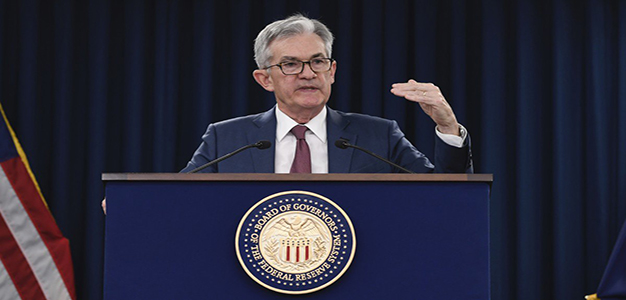
by Pam Martens and Russ Martens at Wall Street on Parade
Fed Chair Jerome Powell now finds himself in the same position as Morgan Stanley’s Howie Hubler and JPMorgan’s Bruno Iksil: he’s got a big trade on and no exit plan. The problem for the U.S. economy is this: Hubler and Iksil were gambling with billions of dollars. Powell is gambling with trillions of dollars. Powell’s Fed has effectively become the Whale in the U.S. debt market.
Powell was last sworn in as Fed Chair on February 5, 2018. Five days earlier, the securities held on the Fed’s balance sheet totaled $4.2 trillion. As of last Wednesday, that figure stood at $8.179 trillion, thanks to Powell’s endless purchases of U.S. Treasury securities and agency mortgage-backed securities (MBS). Making this situation even more dicey, the Fed bought these debt securities with money it creates out of thin air. The U.S. taxpayer is on the hook for 98 percent of the Fed’s balance sheet.
Powell likes to tell reporters at his press conferences that the Fed has only “lending powers and not spending powers.” Powell says this to appease academics and critics who believe he is violating the Federal Reserve Act by becoming the buyer-of-last-resort for Wall Street’s excesses instead of sticking to the Fed’s role as lender-of-last-resort to the banking system.
The Federal Reserve had been around for 95 years when the 2008 financial crisis struck. In all that time, the Fed had never engaged in buying up toxic assets from Wall Street. It understood that the Federal Reserve Act restricted its activity to being a lender-of-last-resort. But this is how the government audit of the Federal Reserve by the Government Accountability Office in 2011 described the Fed’s “purchases” of toxic assets from Wall Street during the 2008 financial crisis:…
Continue Reading